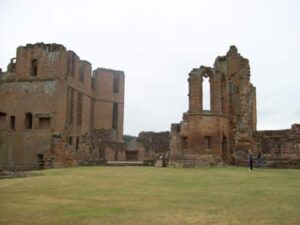
Elizabeth I and Robert Dudley
Elizabeth I had a very special relationship with Robert Dudley, the Earl of Leicester. They had been good friends since childhood and their close relationship caused much scandal and gossip at court and throughout Europe. Elizabeth I may have styled herself as the Virgin Queen but Robert Dudley was constantly by her side and acted as an unofficial consort at times. Although I do not believe that their relationship was consummated, I do believe that Dudley was Elizabeth’s true love, shown by the fact that she kept the last letter he wrote to her in a special box at her bedside.
Unfortunately for Elizabeth and Dudley, the suspicious death of Dudley’s wife, Amy Dudley (Amy Robsart), in 1560, and the scandal surrounding it, put an end to any plans of marriage, if there were any. Elizabeth was forced to distance herself from Dudley and consider other suitors.
You can read more about Dudley and Elizabeth in the following articles:-
Elizabeth’s 1575 Visit to Kenilworth
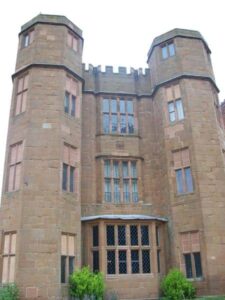
Many see Elizabeth’s final visit to Kenilworth in 1575 as Dudley’s last chance to impress the Queen and win her hand in marriage. Dudley went to extraordinary lengths to impress his Queen:-
- The building of Leicester’s Building, a tower block of state apartments built specifically to provide private and luxury accommodation for the Queen and her servants. It was built between 1571 and 1572 and was used by Elizabeth in 1572 but then improved for her 1575 visit.
- The building of Leicester’s Gatehouse in 1571-1572 to give the castle a grand entrance from the church and the Coventry road.
- The privy garden – Dudley ordered a beautiful privy garden to be made for the Queen.
- Pleasure grounds – The whole landscape around the castle was improved and Langham writes of how there were “many shady bowers, arbours, seats and walks”. There were also plenty of tall and fragrant trees. A bridge was also built to connect the chase and the gatehouse and there was a viewing platform over the mere.
- A firework display – A magnificent firework display took place one night across the surrounding mere.
- A play – On another evening there was a play featuring Triton riding an 18 foot long mermaid and moving islands carrying the Lady of the Lake and her nymphs.
- Hunting – The park and chase were well stocked with deer and game and the mere was rich in wild fowl, perfect for a Queen who loved to hunt.
- The masque – George Gascoigne had written a masque “Zabeta” (a play on the name “Elizabeth”) which was unfortunately cancelled due to bad weather. The Kenilworth Castle Guidebook describes this masque as having a “story hinged on a debate about whether the chaste nymph, Zabeta, should wed, and concluded with a speech urging the queen to marry.” Although it was never performed, Gascoigne improvised with a special farewell to the Queen which consisted of Elizabeth being intercepted by an actor playing “deep desire” (dressed as a holly bush), representing Dudley, who said to her:
“Live here, good Queen, live here;
You are amongst your friends.
Their comfort comes when you approach,
And when you part it ends.”
The Elizabethan Garden
The privy garden was designed and made for Elizabeth I’s own personal enjoyment, a paradise to please and impress the Queen. Although the garden was private and for Elizabeth’s eyes only, Robert Langham was able to get into it with the help of a friendly gardener so we have a contemporary description of it which has enabled English Heritage to recreate it in the castle grounds. Features of the garden included:-
- A terrace – This led from the loggia and gave a superb view over the garden. The terrace was and is lined with a balustrade decorated with obelisks, spheres and the bear and ragged staff (Dudley’s emblem).
- Arbours – Langham wrote of how two arbours “perfumed by sweet trees and flowers” were placed at each end of the terrace.
- Plants – Langham did not go into detail on the plants used in the garden so English Heritage have based their choice on other contemporary evidence such as documents and tapestries. The traditional knot pattern has been used along with popular Elizabethan plants and flowers, and English fruit trees.
- The marble fountain – This is the centrepiece of the garden and is made from white Carrara marble from Tuscany, Italy, just like the original. It features two “Athlants” supporting a “boil” and it is topped with Dudley’s bear and ragged staff emblem. The eight panels at the bottom feature scenes from Ovid’s “Metamorposes”.
- The aviary – The aviary housed birds like the African guinea fowl and canaries and was topped with a cornice painted to appear as though it was decorated with precious jewels.
- Huge obelisks – Langham described these as being carved out of porphyry, a rare Egyptian purple marble.
” a garden so appointed to feel the pleasant whisking wind above, or delectable coolness of the fountain-spring beneath; to taste of delicious strawberries, cherries and other fruits… to smell such fragrancy of sweet odours, breathing from the plants, herbs and flowers; to hear such natural melodious music and tunes of birds.”
My Visit to Kenilworth Castle
I studied at the nearby Warwick University so Kenilworth Castle was one of my weekend haunts but it was still magical to visit it again last week with my family. It is a beautiful castle and it gave me shivers walking around Leicester’s Gatehouse and the ruins of Leicester’s Building and thinking about Elizabeth visiting her “sweet Robyn” there in 1575. The Elizabethan Garden was not there the last time I went and so I was eager to see that. I was not disappointed, it was beautiful and made me understand just how much Elizabeth I meant to Robert Dudley. To lay on such wonderful entertainment, build special buildings and create such a paradise surely shows how much he loved her. What a shame that his plan to marry her backfired, he ended up marrying Lettice Knollys and Elizabeth never returned to Kenilworth, a sad story.
You can see the photos I took on my recent visit to Kenilworth Castle at http://www.flickr.com/photos/theanneboleynfiles/sets/72157624536258800/
Notes and Sources
- Kenilworth Castle Guidebook, published by English Heritage
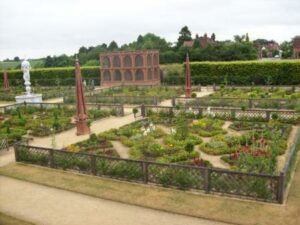
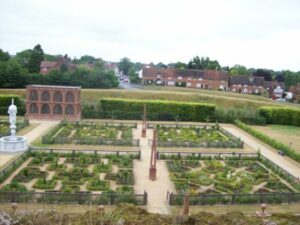
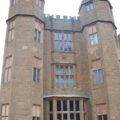
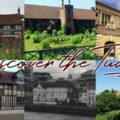

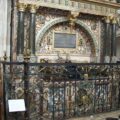



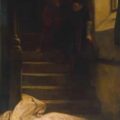

Great pictures, Claire! I’m doing a great deal of reading about Elizabeth and Dudley in preparation for my second novel which will follow my ancestor, Mary Shelton, who served Elizabeth. Enjoying every minute of it and thankful to you for your list of resources and books. I feel we have such a connection as both obsessed with all things Tudor! If you ever “hop the pond” please know you have a place to stay for as long as you might need! I’d LOVE to meet you! By the way, so far, my shift is put together. Lots more to go before the other garments are ready.
Dear Claire,
I do love your article about Elizabeth and Dudley, but must tell you that after first reading in Secret Teachings Of All Ages by Manley Hall that Francis Bacon was the love child of Elizabeth and Dudley and had written Shakespeare in frustration, but did not belive it eith way until I was reading a biography og the two wnd when I got to the bit when Bacon was born to her chief lady in waiting while he had the apartment next door as her master of the horse.?
Cheers
I want very much to visit Kenilworth. I am very fascinated by Queen Elizabeth’s relationship with Robert Dudley. I certainly believe that he was the great love of Elizabeth’s life. I like a comment I once read about their relationship in a book by W.B Marsh and Bruce Carrick it stated “If she was not the Virgin Queen of common legend, he would certainly have been the reason why”.
Lovely article!! The pictures were amazing! Thank you for sharing!!
Really enjoyed the website. I have always been fascinated with Queen Elizabeth l. Your page is very informative. Thank you.
Which other castles did Elizabeth I visit? Not her residences but places she just visited.